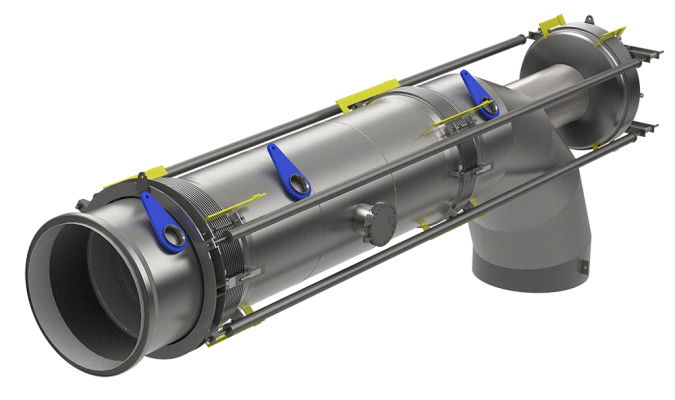PB Expansion Joint
Pressure Balanced Expansion Joint

Features
- Accepts axial, lateral and angular movements
- Eliminates Pressure Thrust
Applications
- Pressure balance are used when pressure thrust needs to be eliminated
- There are two types of PB, with an elbow requires a 90 degree turn in the piping system, and inline can be put in a straight piping system
Operating range
- Full vacuum to 2000 psig depending on size
- Cryogenic to 1650°F+
- Sizes from 1” NPS to > 240” NPS
Materials
Bellows:
- 3XX Series Stainless Steel
- Nickel Alloys
- Carbon Steel
- Titanium
- Zirconium
PB FIT
- Bellows may be a attached or linked
to piping anges, pipe, or other typical industrial connections. - End connections may conform to standards such as ASME B16.5, ASME B36.10, or customer designed.
- Fittings generally not the same at all locations: interface connections may be as noted above. Connections within the assembly are typically to pipe.
PB FORM
- At least Two circular metal bellows, each with 1 or more convolutions. Can have Four bellows.
- Typical dimensions of 2”ANSI NPS to 120” ID. Overall length may vary, typically within the range of 36” to 240”.
- Bellows may include reinforcement or controlling members.
- Convolutions maybe U shaped or toroidal.
- Additional accessories maybe incorporated such as load bearing restraints, movement limiters, protection devices.
PB FUNCTION
- Absorbs movement, primarily axial, but may include small amounts of lateral and/or angular movement.
- Use of controlling members, typically tie rods, is required to cancel the bellows pressure thrust forces on adjacent equipment/piping.
(some mes referred to as PA loads). - Movement amplitude varies, typically within the range of 1/4” to 10”.
- Movement frequency may be extreme low cycle (1 per year), or high cyclic (such as vibration at 60 Hz)
